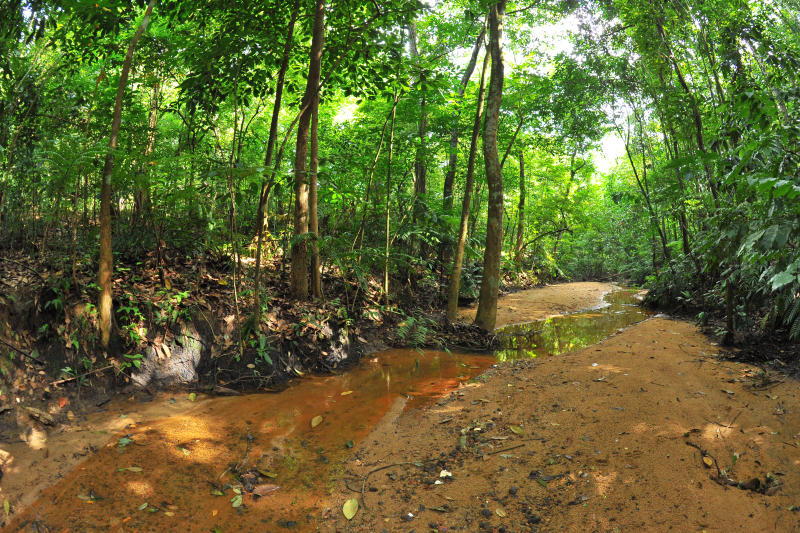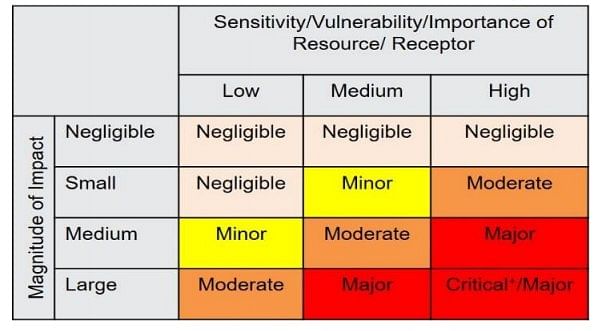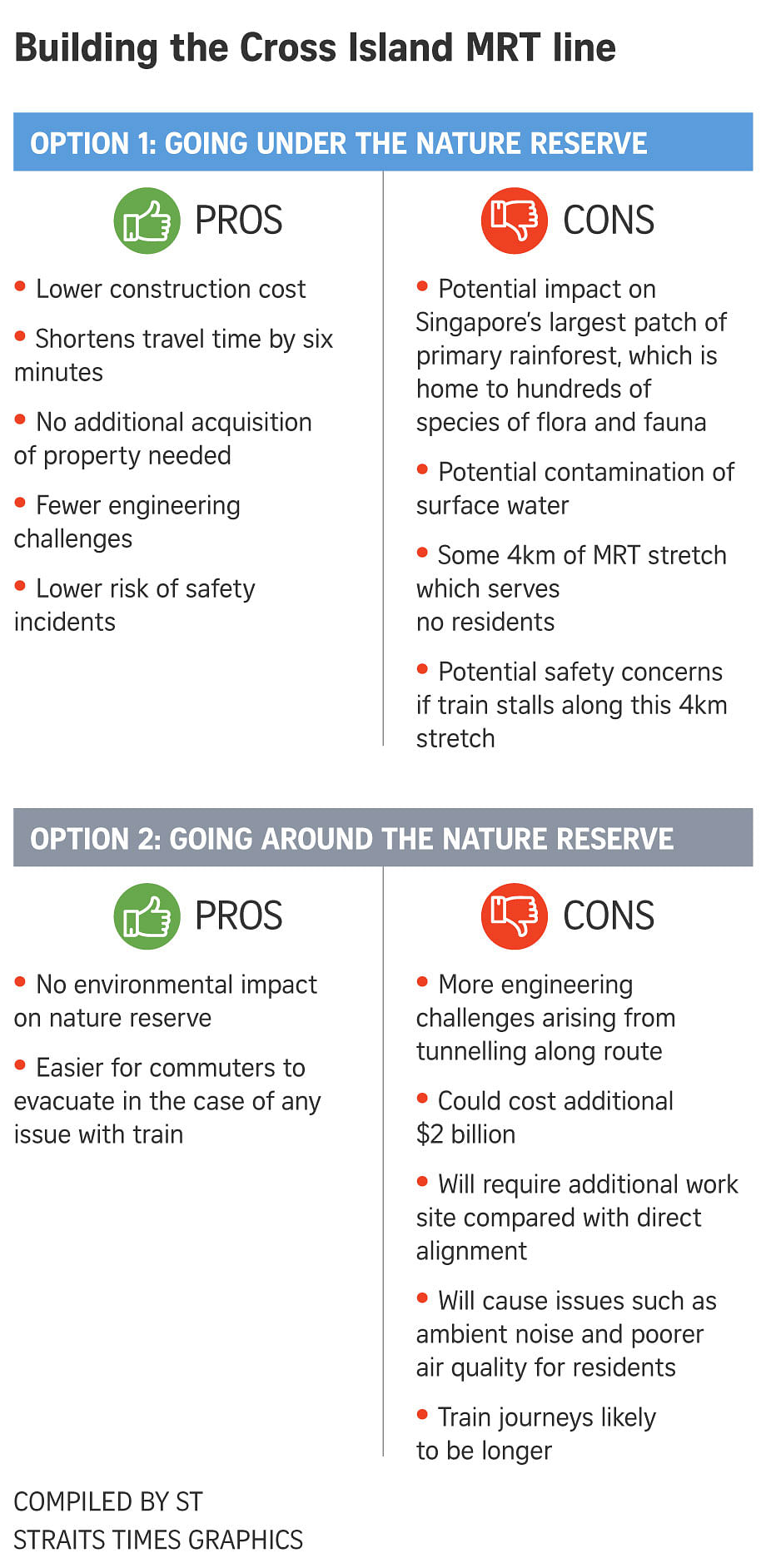Mitigation measures can cut wildlife impact of running Cross Island MRT line under nature reserve: LTA
Sign up now: Get ST's newsletters delivered to your inbox

An LTA-commissioned report had looked at how the construction and operation of the upcoming Cross Island Line could affect the Central Catchment Nature Reserve, and the plants and animals which call it home.
PHOTO: ST FILE
Follow topic:
SINGAPORE - Tunnelling under Singapore's largest nature reserve to build the Cross Island MRT line would call for 3ha of forests next to the reserve - the size of four football fields - to be cleared, which could mean loss of habitat for critically endangered wildlife.
But if mitigation measures are carried out - such as if trees are re-planted in the affected areas, or security fences made "wildlife-friendly" - the impact of the upcoming train line on the Central Catchment Nature Reserve could be reduced, the Land Transport Authority said.
This was a key finding of a lengthy environmental impact assessment report for the Cross Island Line which the LTA released on Monday (Sept 2).
The LTA-commissioned report had looked at how the construction and operation of the upcoming Cross Island Line could affect the reserve, and the plants and animals which call it home.
Even though the line may go 70m under the reserve, two structures at ground level are needed for ventilation, if the authorities opt for the MRT line to run under the reserve, rather than skirting it.
These plots are outside reserve boundaries, but levelling them would result in the loss of habitat for critically endangered wildlife such as the Sunda pangolin and Raffles' banded langur, and increase the likelihood of these animals being disturbed or injured by traffic during construction, said the report.
Despite the "major" impacts that the construction and operation of the Cross Island Line could have on the ecology and biodiversity of the reserve, these could be reduced to "moderate" or even "negligible" depending on the worksite, provided that mitigation measures to reduce impact are carried out.
The report, which is almost 1,000 pages long and done by consultancy Environmental Resources Management, detailed a few such strategies.
It suggested that to reduce the impact of construction works on wildlife, re-planting could reduce habitat loss, while installing rope bridges and poles could help canopy-dwelling species get from one forest patch to another.
Diverting discharge outlets away from rare freshwater streams could also help to reduce pollution of the aquatic habitats.
In terms of reducing the impact of the tunnel operations, the report said that other than wildlife-friendly fences, roosts and nests identified during inspections could be removed with the aid of the National Parks Board.
Determining impact
Whether a development could have "major", "moderate", "minor" or "negligible" impacts on the surrounding environments depends on two key factors.
The first is the sensitivity of the habitat.
To determine this, consultants look at factors such as if the habitat falls within a designated nature area, or if it is important for endangered wildlife species.

In this case, both work sites were considered by consultants to comprise highly sensitive habitats, as the globally threatened Sunda pangolin has been found in them, even though the work sites fall outside the boundaries of the Central Catchment Nature Reserve.
The second factor looked at is the magnitude of the impact.
Again, whether this is large, medium, small or negligible depends on a few factors, including the proportion of the area affected, or the extent of impact on a species population.
For example, large impact magnitudes are classified as such if the works are deemed to affect the entire habitat or a significant proportion of it, or if the works could cause a substantial decline in abundance.
Both factors - sensitivity of area affected and impact magnitude - are considered in the evaluation of the final impact magnitude.
For both work sites, habitat loss was considered to have medium impact magnitude. Taking into account that the area is highly sensitive, the overall impact significance was deemed major.
However, the report said that mitigation measures can reduce the impact magnitude to small, bringing down the overall impact significance to moderate.
Examples of mitigation measures that could aid in this reduction include wildlife shepherding, re-planting of trees, and the translocation of plant species of conservation interest.
National University of Singapore biology lecturer N. Sivasothi said that even with the mitigation measures, it was a "big jump" to say that reduction in impact would be reduced from "major" to "moderate".
"The scale makes the impact sound benign. This is a big problem which the community and the Government needs to review," he said.

Controversy surrounding the project
The Cross Island Line would link Changi and Jurong by 2030, and span at least 50km.
It was first announced in early 2013, and preliminary plans showed it running under primary and secondary forests in the Central Catchment Nature Reserve near MacRitchie Reservoir.
But nature groups, alarmed by the environmental harm which the construction and operation of an underground MRT line right across the heart of the reserve could cause, suggested that the line be built along Lornie Road.
This alternate route goes around the reserve.
The decision on whether to build under or around the reserve is still being mulled over, and an environmental impact assessment of the line for both alignments was done.
The latest study had found that for the skirting alignment, there would be "major" residual impact for residents due to "visual" elements - such as activities at above-ground worksites and the presence of workers.
The alternate route would also involve above-ground works in wildlife-rich areas in the vicinity of Lornie Road and Bukit Brown, said the report.
However, it noted that the impact could be reduced to "moderate" with mitigation strategies similar to those on the direct alignment.
Wildlife consultant Subaraj Rajathurai, whom LTA had consulted for the project, noted that these areas on the skirting alignment were home to wildlife such as the Sunda pangolin and common palm civet.
However, these animals are more widespread compared to "forest specialists" - animals that live only in good forests, such as the Raffles' banded langur and the lesser mousedeer - which can be found in the forested plot east of the nature reserve which would have to be cleared if the line is built there.
"The eastern node of the direct alignment is the area with threatened forest specialists, and impact there should be higher than moderate," said Mr Subaraj, who has been studying Singapore's forests for decades.
"The skirting node at Bukit Brown has animals such as the colugo and pangolin, but these animals, while threatened, are more widespread and should not be compared to the node in the direct alignment," he said.
The LTA had earlier said that the alternative alignment could add about $2 billion to the rail project. This 9km-long skirting alignment will require longer tunnels and extra ventilation facilities, it said, compared with the 4km direct route, of which 2km will run under Singapore's largest nature reserve.
No figure was available for the total cost of adopting mitigation measures should the direct alignment be chosen.



